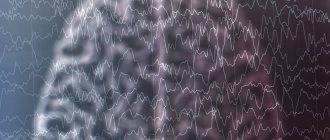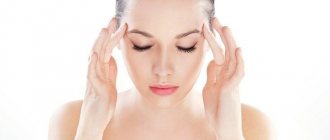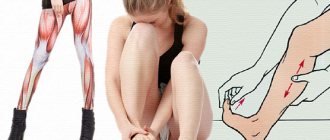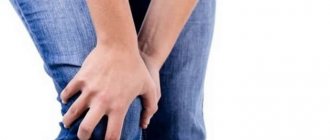Muscle tension (spasm) is chronic muscle tension. It can be caused by injury, awkward posture, or poor posture. But more often the clamps have a deeper reason.
Many people do not know how to express anger, fear and heartache. Any emotional problem is reflected in the body by a muscle block. Thus, prolonged experience of anxiety leads to tension in the muscles of the neck, trapezius, and diaphragm. Such a person will be unnatural and tense, he will get tired quickly and have difficulty communicating, he will be uncomfortable in his own body.
The concept of muscle clamps owes its appearance to Wilhelm Reich. Reich was a follower of Sigmund Freud and expanded on Freud's views by bringing the body to the attention of psychoanalysts for the first time.
Reich noticed that character traits are reflected in certain postures and muscle tensions. He began to work on relaxing this “muscular shell,” as he called it. And I discovered that relaxing the clamps releases a significant amount of energy along with suppressed emotions, as well as memories of the events that caused these emotions.
He found that chronic muscle tension blocks three basic emotions: fear, anger and sexual arousal. Reich came to the conclusion that the muscular and psychological armor are one and the same.
We get used to living in this shell and don’t even notice that our muscles are constantly tense. Many even believe that if muscles are constantly toned, this means that they are strong and trained.
But in reality, tight muscles are weak muscles. This is an unhealthy type of tension that contributes to the development of problems such as tension headaches, temporomandibular joint syndrome, back and neck pain, breathing disorders, vegetative-vascular dystonia, problems of the cardiovascular system, central nervous system, etc.
Constant tension negatively affects the body, leading to fatigue, depression, anxiety, and depression. A lot of energy is spent maintaining the muscle shell. Therefore, a person constantly lacks strength and vigor.
Tight muscles block blood circulation. Because of this, internal organs, muscles and the spine do not receive enough nutrients and oxygen, stagnant and degenerative processes occur, and chronic diseases develop.
In addition, muscle tension is a sign that you do not cope well with your emotions. This disrupts relationships with others and causes increased sensitivity to stress and conflict.
The process begins from birth. In a state of threat or discomfort, the infant cannot escape and defend itself. His psychological defense mechanisms are also not developed. The only way he can defend himself is by tensing his muscles. Children hold their breath, freeze and shrink, thus making themselves “less noticeable.”
Growing up, a child faces social pressure. Parents, trying to adapt their children for life in society, create restrictions and rules for them, creating the image of a “correct” child.
And the child reacts to these restrictions not only by changing behavior, but also by muscle tension. He develops psychological defenses, the purpose of which is to weaken the internal conflict that arose due to the contradictions between other people's demands and his own desires.
All of Reich's patients recalled moments in their childhood when they learned to suppress hatred, anxiety or excitement through certain efforts (holding their breath, tensing their abdominal muscles, etc.). Further, these spasms become chronic, which as a result can lead to serious changes in body posture, facial expressions, and even in the functioning of internal organs.
The muscular carapace consists of seven segments that form a series of horizontal rings at right angles to the spine. In terms of location and psychological essence, they are very correlated with the yoga chakras (the jaw and throat clamps are often combined into one). Therefore, yoga is an effective way to work with them, because historically many yoga exercises were built around the concept of chakras.
Wed. location of muscle clamps and chakras in yoga:
These are the segments:
1. Eyes. Muscles of the forehead, eyelids and extraocular muscles . The clamp manifests itself in the immobility of the forehead and a fixed gaze, or, conversely, wide open eyes, a running glance, raised upward or frowning eyebrows. It blocks “social” fears (fears associated with communication). This tension is often accompanied by headaches (“neurasthenic helmet”), eye fatigue, and the formation of wrinkles.
2. Mouth. Muscles of the chin, jaw, back of the head and upper throat . The clamp manifests itself in the form of clenched teeth, compressed lips, a tense neck, a tendency to constantly chew and bite something (pen, gum, nails). It reflects the prohibition against expressing anger. Such people are usually reserved in expressing their feelings, appear cold and distant. This clamp leads to tooth decay and headaches (in the back of the head).
3. Throat. Deep neck muscles, vocal cords and tongue. The clamp manifests itself in the form of a quiet or choked voice, a feeling of a “lump in the throat.” It also reflects the prohibition against expressing hurt and anger, crying and screaming. It is difficult for such people to stand up for themselves, to say something in a tense situation, they look indecisive and unsure of themselves. This clamp can lead to chronic colds (tonsillitis, sore throat), diseases of the thyroid gland.
4. Chest. Pectoral muscles, muscles of the shoulders, shoulder blades, arms and hands . This is one of the most important segments. It is associated with love and the feelings that arise during its deprivation: jealousy, sadness, longing, loneliness. The tension manifests itself in stooping (or a deliberately upright posture), raised shoulders, tension in the “collar zone,” clenched fists, the need to constantly fiddle with something in the hands, and constricted breathing. Clamping in this area can lead to pain in the heart, tachycardia, pain in the neck and thoracic spine, bronchial asthma (together with diaphragmatic clamping).
5. Diaphragm. Respiratory diaphragm, internal organs, muscles of the upper lumbar vertebrae. The tension manifests itself in constrained breathing. He restrains anger, disgust, disgust. This clamp can lead to stomach problems (reflux esophagitis, gastritis, tendency to nausea and vomiting, or, conversely, inability to induce vomiting) and bronchial asthma.
6. Belly. Muscles of the abdominal wall and lower back. Externally, the block manifests itself as an overly protruded or retracted abdomen and a tense lower back. The tension of these muscles is associated with fear of attack (“stomach” - “life”), hostility and shame. Retraction of the abdomen is an attempt to shrink, to hide. This block greatly reduces overall tone, causes lethargy, apathy, and loss of strength. It can lead to intestinal digestive disorders (irritable bowel syndrome, colitis, abdominal pain, constipation or diarrhea), and lower back pain.
7. Taz. All muscles of the pelvis and legs. The block manifests itself in an inactive, constricted pelvis, a constrained gait, trembling in the legs, and a feeling of instability. It suppresses excitement, pleasure, “vital” fears (fear for life). This clamp can lead to congestion in the pelvic area, diseases of the reproductive system, varicose veins of the legs and pelvis.
It seems that you can work with clamps through sports. But sport is not always able to eliminate them. Active loading of tense muscles is even contraindicated. To remove the clamps, the muscles should be loaded with low intensity.
The same can be said about “sports” yoga. Performing yoga asanas in a normal, mechanical mode does not help remove clamps. I know people who have been doing yoga for many years, but have not been able to get rid of muscle armor.
To get rid of the muscular shell, you first need to become aware of it. This is achieved by alternately tensing and relaxing muscles, special gymnastics for individual areas of the body, and practices of bodily awareness. Then you need to relax the tense muscle group. Static exercises aimed at tension followed by stretching and relaxation (so-called post-isometric relaxation), deep work with breathing, bandhas and mudras help here.
It is important to reduce the level of stress and anxiety, since it is the prohibitive level of emotional stress that leads to the formation of tension. This is achieved through deep relaxation and meditation techniques (shavasana, yoga nidra, auto-training, visualization, etc.).
We must also remember that muscle tension is associated with emotional problems. Therefore, it is necessary to relax the muscular shell in combination with internal work on your emotions.
Sometimes, after deep work with clamps, a person experiences an attack of strong negative emotions (fear, melancholy, anger). Or relaxed muscles quickly tighten again. This means that the psychological problem is deeper than it seems. It forms new spasms, because a person still does not know how to express his emotions, “squeezing” them into the body. An experienced psychotherapist will help you cope with the internal causes of tension.
A body without muscle tension is attractive and flexible. Energy is no longer wasted on maintaining tension, and the person becomes relaxed, energetic, healthy and naturally expresses his emotions.
To perform the exercises, lie on your back (in savasana).
How to cope with stress
Welcome! Meanwhile, according to modern scientists, constant nervous tension is a direct path to neurosis, heart disease, stomach disease and other health problems. This is why it is so important to know how to cope with stress and learn how to respond correctly to irritating factors. What is stress and what are its consequences? Our world is so structured that it is almost impossible to avoid nervous experiences and worries in it. No one is immune from stress, neither adults, accomplished people, nor children, nor the elderly.
They can be caused by anything, even harmless, in the opinion of others, things or circumstances. The most common causes of stress are troubles at work, in your personal life, problems with children, etc.
And indeed, at the moment when the body reacts to any stimuli - events that differ from the usual way of life that are happening or have happened, a portion of adrenaline enters the blood, and the more emotionally a person reacts to what happened, the greater it is.
At the same time, the heart begins to beat faster, the muscles tense, the brain is more supplied with oxygen, the pressure rises - in general, the body mobilizes all its reserves and comes into combat readiness.
But what will happen to him if he constantly remains in this state? Of course, nothing good. First of all, the blow is dealt to the functions of the brain - sleep is disturbed, hysterical states, nervousness, etc. occur. Stress becomes a common cause of decreased immunity, gastritis, ulcers, hormonal imbalance, skin diseases and sexual dysfunction. It significantly increases the risk of developing heart and vascular diseases, often leading to hypertension, heart attacks, etc.
However, thinking that stress is caused by a stressful situation is not entirely correct. It originates inside a person as a reaction to one or another event that is perceived by him as stressful.
Therefore, all people react differently to the same circumstance: some get irritated only from a sideways glance, while others are absolutely calm even if everything around them is collapsing. The amount of stress a person experiences depends more on himself than on what happened to him. Based on this, you should develop the right tactics and choose ways to deal with stress.
Unfortunately, there is no one universal way that would help relieve stress for everyone at once. What is perfect for one person may be completely useless for another. However, several general methods of dealing with stress can be identified: eliminating the causes of stress, alleviating the condition and preventing stress. In this case, you need to try to change the situation that led to stress or your attitude towards the current situation.
However, the problem should not be solved instantly. Distract yourself from something, occupy your head with more pleasant thoughts. Finally, just lie down and sleep. After such a rest, the current situation will probably no longer seem so terrible, since emotions will be replaced by logic.
Remember, there are two types of problems - solvable and unsolvable. You need to learn to distinguish them. Direct all your efforts to what can be fixed and forget about what cannot be changed.
If you constantly think about unsolvable problems, stress will only increase. It’s better to take them for granted, as life experiences, and move on without looking back. Relief from stress. When the cause that led to stress cannot be eliminated. It is advisable to think about how to relieve tension and stress so as not to aggravate the condition in the future. There are quick ways to do this that can alleviate the condition for a while. These include:. Manage stress through diet, exercise, meditation and mental relaxation.
Today, most people talk about stress, it is considered the cause of all problems and even health problems. But few people think about what this concept even means. Stress can be external and internal. External stress affects us from the outside, and internal stress acts from the body. External factors include the environment, workload, prolonged exposure to the sun, bad habits, and problems in your personal life. Internal ones include allergies, malfunction of the immune and endocrine systems, poor nutrition, poor condition due to a lack of minerals and vitamins.
This division, at first glance, seems correct, but if you look more carefully, there are disagreements.
Of all the external factors, only misfortunes and tragedies, and ecology can really be considered such. As for the remaining factors, a person does all this consciously. A person chooses for himself: to smoke or not to smoke, to drink or not to drink, what job to choose, what manner of behavior to use with a loved one. Methods for dealing with stress depend on the impact it has on a person.
The dependence depends on how timely a person can notice the signs, recognize not only them, but also the fact that the nervous system has once again failed. In psychology, many methods and books are devoted to the fight against stress. Sports will not only improve your health, but also relax constantly tense muscles and allow you to sleep better.
Even the smallest physical exercises carry a lot of positive benefits. For example, blood flow to the brain improves, thereby providing a flow of oxygen and sugar. Another method of dealing with fear and stress is muscle relaxation. The point is that the muscles need to be forcibly tensed as much as possible.
Fix in this state for a few seconds, and then relax. Controlling your breathing is also a good way to deal with stress. This method is a key element of several relaxation techniques, such as meditation or yoga. Ways to deal with stress. The reality is that it is difficult to avoid stressful situations.
Throughout his life, a person often faces difficult situations that can cause stress. The body's response to stress is characterized by insomnia, headaches, increased nervousness, loss of strength, stomach and back pain. Against this background, a person may start drinking, smoking, and may develop drug addiction. This is why it is important to neutralize the effects of stress to protect yourself from its potential harm. The body is completely ready to run or defend in case of danger; a lot of stress hormones - adrenaline - are released into the blood.
But we... stay in place, don’t run anywhere, we just clench our fingers into fists and nervously bite our lips. As a result, the adrenaline accumulated inside, which the body has prepared, does not release, and it begins to negatively affect the person from the inside.
In addition, unspent adrenaline keeps the muscles in a spasmodic state, which can provoke attacks of cervical and lumbar osteochondrosis, due to pinching of the nerves passing through the thickness of the back muscles.
And thickening of the blood in case of injury leads to a deterioration in its circulation through the vessels, the content of cholesterol, sugar and uric acid increases in it, which has a bad effect on the functioning of the heart, brain and internal organs. Restraining emotions and suppressing aggression become habitual for us; we don’t even suspect how strong the psychic energy is heating up in us, unsuccessfully looking for a way out.
What to do? We can’t, like cavemen, fight every time we experience negative emotions! Fortunately, there are other ways to release negative mental energy. We are probably still far from the advanced Japanese, but we can let off steam in another way, for example, by doing physical exercise. By combining business with pleasure, you will not only shed negative energy, but at the same time tighten your figure. Try to relax, close your eyes, imagine some pleasant picture: as if you were lying in a sunny forest clearing or on a sandy seashore.
The sun gently warms you with its warm rays, and the sea breeze pleasantly refreshes you with a light breeze. Just imagine what will happen to you in a month if you begin to cheer up your mood by endlessly devouring buns and cakes. It’s better to eat a banana instead, because its tasty pulp contains anti-stress substances that quickly improve your mood. Master autogenic training techniques. The word also helps to calm down. You've certainly heard that laughter prolongs life - this is a well-known fact.
Buy a collection of funny jokes and always carry it with you. Or keep a funny photo of your child or pet with you. Looking at their cute faces, you will smile, relax and the nervous tension will immediately go away. Another magical anti-stress remedy is aroma. The smell of perfume, which you used, for example, during a vacation at the seaside, will help you regain your lost peace of mind. Once in the comfort of your own home, you can lift your spirits with an aromatherapy session.
Citrus essential oils, as well as anise oil and basil, help normalize mental mood, relieve anxiety and sadness, and the fresh aroma of verbena helps relieve headaches and nausea. Listen to music more often, download your favorite melodies to your phone - they will help you relax, improve your mood, and set you in a positive mood. For example, I have a friend who, before difficult, important events, likes to dance in front of the mirror to some music that charges with positivity and motivates her to win instead of morning exercises.
And you know, it works! When you come home, take a refreshing shower - stand so that the jets massage your head and shoulders, and let all the negative information that accumulated during work go away with the water. Water is the best relaxation, it calms the nervous system, relaxes muscles well, and washes away all negativity. A sauna or Russian bathhouse perfectly heals the body and normalizes lost mental balance. It is especially pleasant when your loved one performs it for you.
After work, go to a cafe with your loved one, or have a romantic dinner at home by candlelight.
Soul Muscle
In Eastern culture, the psoas muscles are called the “muscles of the soul” because they are connected to the central nervous system.
Having a connection with the diaphragm, these muscles play a role in the function of breathing, and as is known, there is a two-way relationship between breathing and emotions. The connection between the psoas muscles and the diaphragm means your ability to walk and breathe, and respond to fear and anxiety.
Just remember the emotions you experience when “butterflies appear in your stomach.” When you get scared or stressed, it causes tension in these muscles.
And if stress is chronic, your psoas muscles are always in a tight state, becoming shorter and denser. Stress is aggravated by a modern sedentary lifestyle, ill-fitting shoes, tight clothing and other factors.
A strained psoas muscle can lead to:
- pain in the back and lower back,
- pain in the knees and hips
- digestive problems,
- breathing problems
Muscle tension, muscle tension during neurosis
Let us clarify right away so that people do not experience illusions: it is precisely at the moment of panic attacks that relieving muscle tension does not help. Another thing is that when a person uses neuromuscular relaxation as a means of reducing the general level of anxiety, the general level of tension, it really helps. After all, if we talk about neurosis, then a neurotic disorder, in fact, is a consequence of internal tension, which, in turn, is a consequence of a person’s thinking, beliefs, and a consequence of maladaptive life strategies.
Other reasons
In addition to the above, there are also rare, rather casuistic, cases when muscle weakness is an alarming symptom of developing diseases, both in protracted and fulminant forms. But with the diseases listed below, weakness in the muscles, including the legs, is never a key symptom. It is just one of many other signs that have a much more significant essence for diagnosing diseases.
It is for this reason that, even if you feel sudden or severe weakness in your legs, do not rush to make a diagnosis in a panic. But the following conditions cannot be ruled out.
- Stroke (ischemic and hemorrhagic) is a possible cause of leg weakness in the elderly. Treatment must be immediate. The manifestation of the symptom in question during a stroke is predominantly unilateral. Very often there are restrictions on movement on the same side and, for example, the arm seems to weaken. There is also severe dizziness, headache, disturbances of consciousness up to a coma, and speech is impaired. With the development of a stroke, the symptom in question appears very quickly and, as a rule, predominantly on one side. These are the causes of weakness in the left arm and leg.
- Polyneuropathy (all its types). Gradually or sharply, it is always accompanied by sharp, tearing pain in the legs, sensitivity is impaired, and numbness of the foot is observed. Bilateral weakness can develop either gradually or acutely.
- Radiculopathy. In common parlance, radiculitis. It can be unilateral, less often bilateral. Pain in the lumbar region, clearly radiating to the leg. There is weakness and impaired sensitivity, but it is always accompanied by a pronounced pain syndrome.
- What other causes of weakness in the left leg, for example? Multiple sclerosis is a frightening disease because it cannot be completely cured. It is only possible to put it into remission. The disease is insidious in that it has many not clearly expressed symptoms, which can also accompany a lot of other diseases or simply resemble ailments. Weakness in the lower extremities is just one of the signs. All symptoms of the disease are mild. Many suspicious patients, having noticed muscle weakness, double vision, dizziness, memory disorders, and surfing the Internet, immediately rush to make this diagnosis. It is for this reason that we will look at this disease in more detail below.
- Cerebral palsy. There is weakness in the legs. Again, this is far from the only symptom of this insidious disease. It is accompanied by spastic muscle hypertonicity, i.e. the inability to move the leg at all, there is also a lag in physical and mental development.
- Myasthenia. Above we discussed this disease in detail.
- Parkinson's disease as a cause of weakness in the legs. At an early stage there is no weakness in the legs yet. The first signs are awkward movements, a shuffling gait, and slowness of action. There is also trembling in the hands.
- Oddly enough, muscle weakness, including that of the legs, can be caused by psycho-emotional problems. The most complicated case is hysterical paralysis. The phrase “all illnesses come from nerves” is more appropriate here than ever. Clinical manifestations are varied; leg weakness is far from the only expression of this type of disease.











